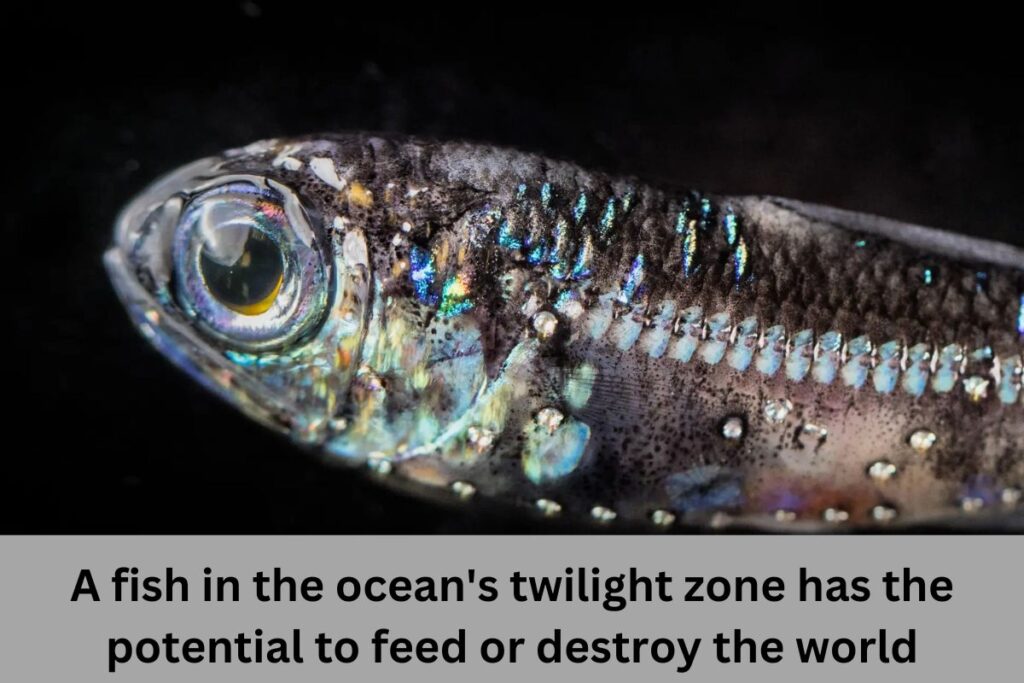In 1789, the explorers Alessandro Malaspina and José de Bustamante set sail from Cádiz on Spain’s first scientific expedition round the world. For 5 years, Malaspina and Bustamante studied and picked up animals and vegetation throughout the Spanish empire, which stretched alongside the North, Central, and South American Pacific coasts, and westwards to the Philippines.
Contents
Too Tempting to Disregard
Lanternfish are unlikely to appear on anyone’s plate right away because they’re far too oily and stuffed with bones. However, because of their high oil content, they can be ground into animal feed, primarily for fish farms. Following the discovery of the Malaspina, it was suggested that if only half of the lower estimated mass of twilight-zone fish were caught – still a large 5 gigatonnes – it could theoretically be converted into sufficient fishmeal to yield 1.25 gigatonnes of farmed seafood, which is significantly greater than the current annual 0.1 gigatonne catch of untamed fish.
However, even if harvesting lanternfish were to begin, and ignoring different environmental impacts of various types of fish farming, such as air pollution from prescribed drugs and waste, many questions whether or not it would achieve the noble goal of ensuring food for all.
Many fishmeals will be fed to salmon and prawns in food-rich, developed countries, and an increasing amount will be sold as a supplement in pet food. Furthermore, previous attempts to determine lanternfish fisheries by Russian and Icelandic fleets have been a commercial failure. Fishing in these deep waters has proven to be prohibitively expensive, and fishmeal is prohibitively cheap.
However, more recently, prompted in part by the overestimation of lanternfish populations, plans are in the works to investigate how to make twilight-zone fisheries profitable. The EU has funded a five-year analysis mission to investigate such options. Norway issued 46 exploratory fishing licences for the twilight zone in 2017. These fisheries will most likely strive to grow to be profitable not by producing low-cost fishmeal, but by supplying the extra profitable “nutraceuticals” business, which provides merchandise like omega-3 dietary supplements and fish-oil pills that extra people are taking despite little proof of their benefits.
These and other initiatives to develop a “twilight fishery” reflect an enormous need to hunt wild fish. Amid talk of sustainability – and the need to “feed the world” – is the counter-assumption that leaving these fish unfished would be a waste in some way. The term “underexploited” is frequently used, as if these animals’ sole purpose is to profit humans. The idea of a thousand trillion gleaming fish cascading through the twilight zone is simply too appealing for many to pass up.
To catch enough lanternfish to make the effort worthwhile, these fisheries will most likely need to use large midwater trawl nets and target the fish throughout the day, as they cluster collectively in massive shoals that sonar can easily locate. The nets will not hit the bottom or smash through 1,000-year-old corals, but as they sieve and press the open water, they may catch other animals – sharks, dolphins, and turtles – who already have enough problems.
Climate penalties
In contrast to extremely slow-growing deep-sea species like orange roughy, lanternfish can withstand intense hunting pressure; they’re much faster growing, and their lives are measured in months, with some living for less than two years. However, fishing in the twilight zone may cause a different kind of disaster by interfering with the way lanternfish and comparable species help regulate the local weather.
Their day-by-day routine of swimming up and down types important connections between the floor and the deep by boosting the “particle injection pumps”. This is the strategy of little fish feeding in the shallows, then plunging downwards, the place they’re eaten by larger fish that stay in the deep, thereby “pumping” carbon dioxide from the ambiance into the deep ocean the place it will be saved. If particles sink beneath 1,000 meters their carbon will be saved for as much as 1,000 years earlier than returning to the floor. A examine of the continental slope of western Ireland estimated that deep-dwelling fish seize and retail equal to 1m tonnes of CO2 a yr.
No one will be positive how shortly or critically this organic carbon pump may weaken if twilight-zone fisheries had been to wreck that hyperlink between the floor and the deep. But there’s a danger that lanternfish are a part of the world local weather system that must be left alone.
Alarmingly, not everybody agrees with the new elevated determine for the numbers of twilight-zone fish. Even the 2010 Malaspina examine states its uncertainty and the limitations of the strategies used. But the headline – that the twilight zone comprises a minimum of 10 instances the quantity of fish as beforehand thought – grabbed individuals’s consideration.
Subsequent research has looked more closely at these figures and the assumptions that support them. The Malaspina study, crucially, assumed that the acoustic “backscatter” – the amount of sound reflected from the deep and acquired by the sonar – came solely from fish. They are not, however, the only animals in the twilight zone with reflective, gas-filled bubbles inside their bodies. They are also found in a variety of siphonophores, which are complex jellies discovered and illustrated by the nineteenth-century German naturalist Ernst Haeckel. Furthermore, because some twilight-zone fish lack swim bladders, they are rarely detected by sonar.
A 2019 study reinterpreted the Malaspina expedition’s acoustic data, taking these uncertainties into account. The resulting twilight-zone fish estimates ranged from 1.8 to 16 gigatonnes. It is simply too soon to say where on this scale the true worth lies, which implies that it is far too soon to begin catching lanternfish based primarily on the risky premise that there are likely to be 20 gigatonnes on the market.
Till Then, keep yourself updated with all the latest news from our website dailyrealtime.com.

